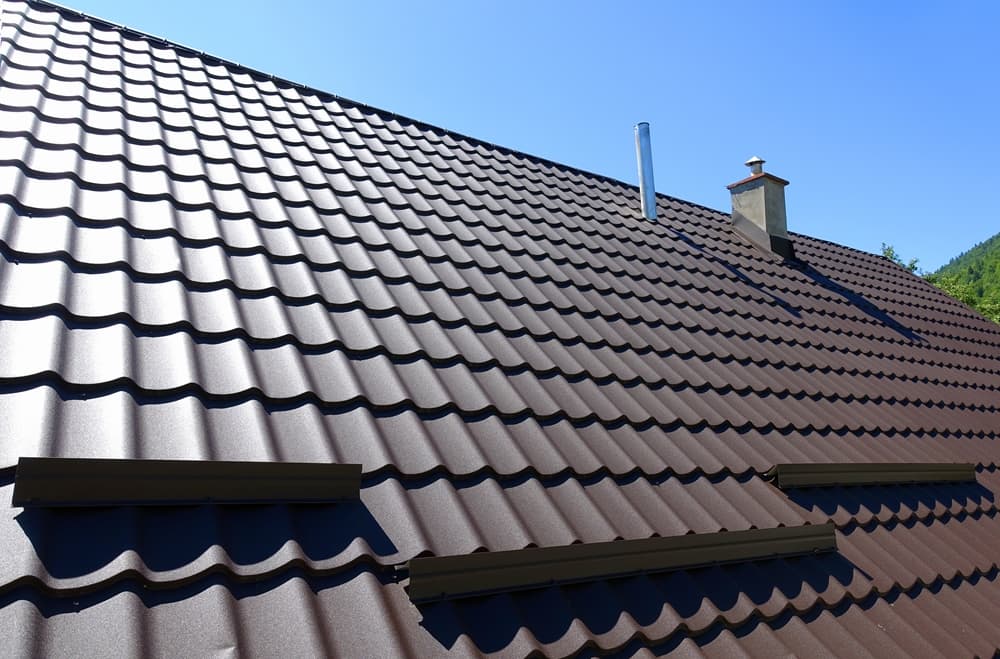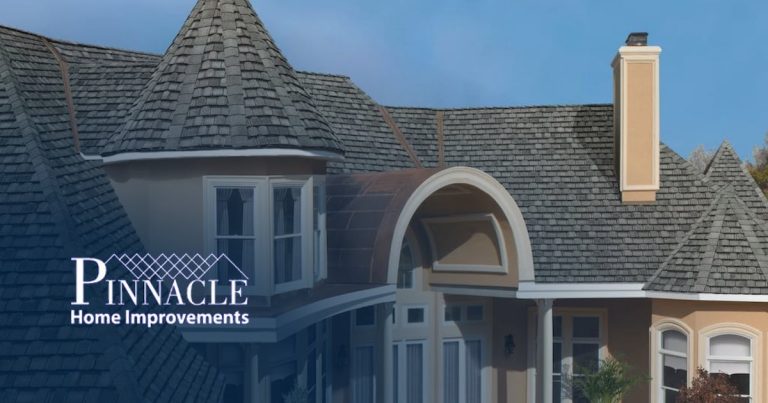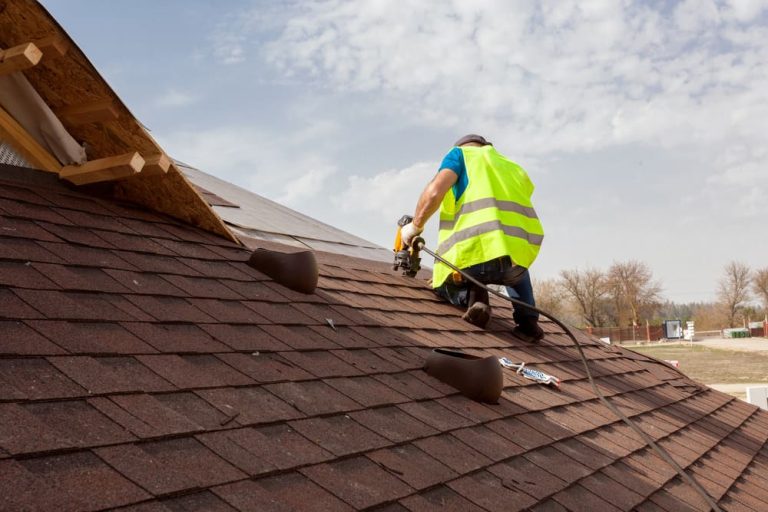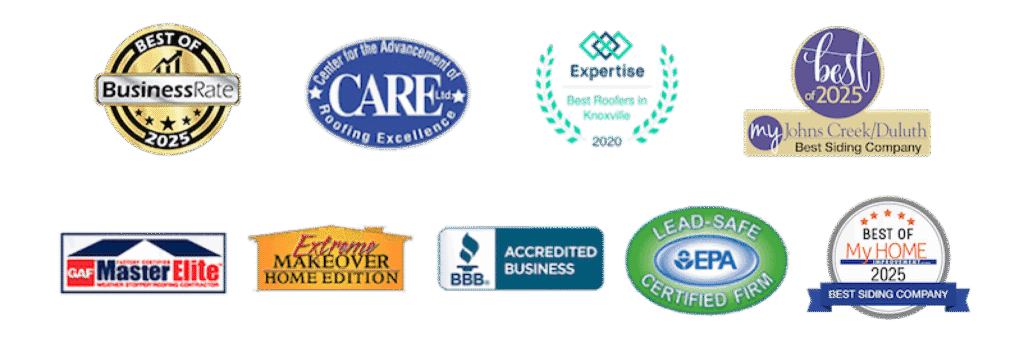At Pinnacle Home Improvements, we specialize in providing high-quality metal roofing installations for residential and commercial properties. With years of experience in the industry, our team of skilled professionals guarantees exceptional workmanship and customer satisfaction. Installing metal roofs is what we do best! It is no wonder we are known throughout the area as the top roofing contractor.
While metal roof installation is best left to the professionals, we’re happy to educate you on what to expect when you hire our team. In this metal roofing installation guide, we will lead you through the process of installing metal roofing, highlighting the key steps and considerations to ensure a successful installation.
How To Install A Metal Roof: A Step-by-Step Guide
Installing a metal roof can be a wise investment for homeowners and businesses seeking durability, longevity, and energy efficiency. Metal roofing materials are known for their resistance to extreme weather conditions, including heavy rain, hail, and high winds. Their reflective properties also contribute to reducing cooling costs by deflecting sunlight, making them an environmentally friendly choice. As a result, they offer a sustainable roofing solution with potential savings on energy bills and maintenance costs over time.
When considering a new roof, it is essential to understand the installation process of metal roofing to ensure it is done correctly. A properly installed metal roof can last as long as the house itself, often with a warranty of 30 years or more. The installation process involves careful preparation of the underlying roof structure, precise measurements, and the use of specialized tools and fasteners to secure the metal panels or shingles in place.
Choosing the right type of metal roofing is crucial, as it must align with the specific needs and design preferences of the property. Options include various metal types, such as steel, aluminum, and copper, as well as a range of colors and finishes to complement the building’s exterior. Although the upfront cost of a metal roof may be higher compared to traditional materials, the long-term benefits and minimal upkeep make it a cost-effective solution in the long run.
Evaluating Your Options
When planning to install a metal roof, it’s crucial to assess your options thoroughly. This includes considering various factors related to your specific situation and understanding the different types of metal roofing materials available.
Factors to Consider
Before committing to a metal roof, one must weigh several key factors to ensure that the decision aligns with their needs. Notably, the local climate can significantly affect the performance of a metal roof. Areas prone to severe weather conditions, such as heavy snowfall or hurricanes, require a roofing system that can withstand substantial stress.
The roof’s slope or pitch also plays a vital role as certain metal roofing systems are better suited to steep or flat surfaces. A steep slope may call for a standing seam system, which allows for easy shedding of water and snow. The building structure must be analyzed as well; it should support the weight of the metal roofing, although most metal options are surprisingly lightweight.
Energy efficiency is an attractive feature of metal roofing, often reflecting sunlight to reduce cooling costs. Assess the available insulation options for the best energy performance.
The longevity and warranty of the metal roofing material are also significant. Most metal roofs are highly durable, often lasting several decades with warranties that can extend just as long.
Types of Metal Roofing Materials
Metal roofing is not monolithic; it comes in a variety of materials, each with its own set of costs, benefits, and aesthetic attributes. Aluminum is lightweight and doesn’t corrode, making it ideal for coastal environments. Steel, on the other hand, is typically more affordable and is available in three primary types: galvanized, galvalume, and weathering steel, each with a varying degree of protection against corrosion.
Copper roofing stands out for its longevity and the beautiful patina it develops over time but is also one of the pricier options. Zinc shares similar attributes to copper, including a lower rate of corrosion, and also boasts an ability to self-heal scratches over time.
Selection should align with both the functional requirements and aesthetic preferences. For example, choosing metal shingles could be more appropriate for those seeking a traditional look, while others may prefer the modern appearance of standing seam metal roofs.
Careful consideration of these factors and materials will lead to an informed decision that best suits the specific needs of the property.
Tool and Material Preparation
Before commencing the installation of a metal roof, one must gather the proper tools and materials. This preparation is crucial for a seamless and efficient installation process.
Tools:
- Tape Measure: Essential for accurate measurements.
- Metal Snips: For cutting metal panels and trim.
- Screw Gun: For fastening metal panels.
- Hammer: To adjust and fit panels.
- Tin Snips: To cut and shape metal components.
Materials:
- Metal Panels: The primary roofing material.
- Underlayment: A water-resistant layer between the roof deck and metal panels.
- Fasteners: Used to secure metal panels and trim to the structure; these could be screws or nails specifically designed for metal roofing.
- Flashing: Needed for waterproofing roof protrusions and valleys.
- Sealant: Provides a watertight seal at joints and seams.
Safety Equipment:
- Safety Gloves: To protect hands while handling metal panels.
- Eye Protection: To safeguard eyes from metal fragments and debris.
- Slip-resistant Shoes: For added safety when working on the roof.
Before starting, an installer should ensure that all equipment is in good condition, and materials are stored safely, ready for use. Familiarity with the tools and correct handling procedures is essential for preventing injuries and ensuring the project’s success.
Installation Process
Installing a metal roof requires precision and adherence to specific steps to ensure a long-lasting roofing solution. This section details the crucial phases, from preparing the roof to troubleshooting common issues.
Roof Preparation
Roof preparation is the foundational step of the process. It involves thoroughly cleaning the existing roof surface and removing any old materials. Sheathing should be inspected for damage and replaced if necessary to provide a stable base for the metal panels. It is essential to install an underlayment to provide a secondary moisture barrier.
- Tasks for Preparation:
- Clear debris and old roofing materials.
- Inspect and replace damaged sheathing.
- Lay down an appropriate underlayment.
Measuring and Cutting
Accurate measurements are vital to ensure that metal panels fit precisely and offer optimal coverage. They should measure the roof’s surface area to determine the number of panels needed. Cutting metal panels requires specialized tools, such as metal shears or a nibbler, to avoid damaging the material.
- Equipment for Cutting:
- Metal shears
- Nibbler
Securing the Panels
Securing metal panels starts with proper alignment and continues with appropriate fastening to the roof’s frame. Panels typically overlap by at least one corrugation. Fasteners should be driven perpendicular to the roofing surface, and spacing should adhere to manufacturer specifications.
- Fastener Specifications:
- Type: Galvanized steel or aluminum
- Spacing: As per manufacturer recommendations
Troubleshooting
Common challenges during metal roof installation include improper alignment, over-driving screws, and inadequate sealing of joints. Solutions include using a string line to maintain straight lines and adjusting screw tension to avoid deformation of the metal. Sealants can be applied to gaps to prevent leaks.
- Troubleshooting Steps:
- Align panels with a string line.
- Adjust screw tension appropriately.
- Apply sealant to gaps or joints.
Maintenance and Care
Regular maintenance is pivotal for the longevity of a metal roof. Adhering to a schedule not only safeguards the material but ensures that the roof continues to provide optimal protection for the structure below.
Inspection: Homeowners should inspect their metal roofs bi-annually, preferably in the spring and fall, to check for any signs of damage or wear. Look for dents, scratches, and areas where the roof may have been penetrated, such as around fasteners and seams.
Cleaning: Accumulation of leaves, branches, or other debris can cause water to pool, potentially leading to corrosion or aesthetic damage. It is advisable for one to clean the roof surface at least once a year using water and non-abrasive cleaning agents.
Paint Touch-up: In case of scratches, applying a manufacturer-approved metal touch-up paint will prevent the exposed metal from rusting.
Sealant and Fastener Check: Every few years, or as needed, inspect and replace old or failing sealants and fasteners to maintain the roof’s integrity.
Trim Overhanging Tree Branches: To reduce debris accumulation and prevent scratches, trim any tree limbs that come in contact with the roof.
Gutter Maintenance: Gutters should remain clear to prevent water backup. A clogged gutter can lead to water overflow, which may result in damage to both the roof and the building structure.
Professional Inspection: If one is not confident in performing these tasks, hiring a professional for a thorough inspection is recommended. They come equipped to handle complex issues and can provide detailed guidance on all aspects of maintenance.
Ready to move your roofing project forward? Now that you know more about how to install metal roofing, the next step is to reach out to our team.








